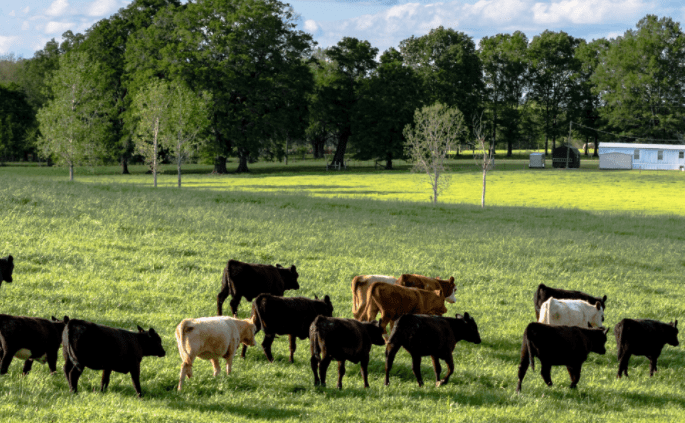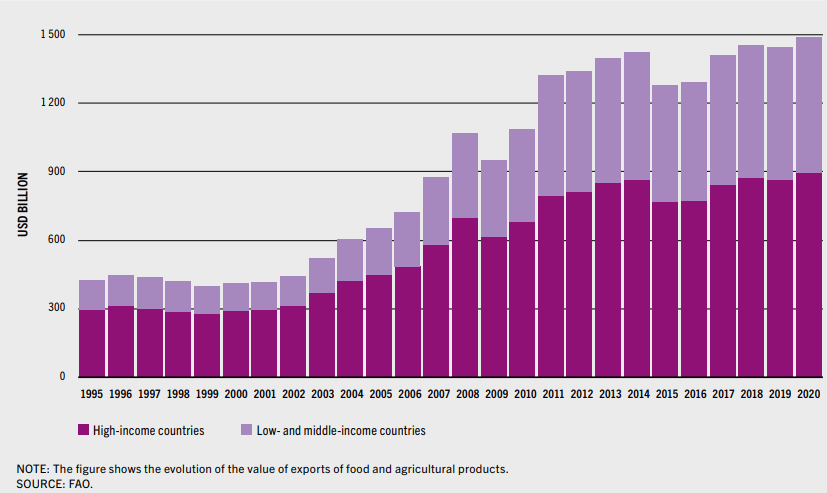Exports of food and agricultural products: 26-year trends

The Food and Agriculture Organization of the United Nations (FAO) analyzed the trend in food and agricultural exports over 26 years, from 1995 to 2020.
Since 1995, agricultural and food trade has more than doubled in volume and calories.
It has also increased the use of natural resources for the production and export of food and agricultural products, such as land and water.
In general, trade in goods and services became more important in the world economy and the share of traded production increased rapidly between the early years of the new millennium and 2008.
However, FAO indicated that this process of globalization, as measured by the share of exports of goods and services in world Gross Domestic Product (GDP), came to a halt after the 2008 financial crisis.
The evolution of global food and agricultural trade, 1995-2020.
FAO highlighted the benefits of growing exports of food and agricultural products. First and foremost, trade connects agrifood systems and people. It plays an important role in providing consumers around the world with sufficient, diverse and nutritious food, and generates income and employment for farmers, workers and traders throughout the agricultural and food industries in different countries.
Although manufactures continue to be more heavily traded than food and agricultural products, globalization in food and agriculture resembles general patterns of globalization.
Food exports
FAO argued that parallelism as follows. The total value of traded food and agricultural products grew strongly between 2000 and 2008, but this trend came to an abrupt halt in 2009 as a result of the financial crisis.
Although trade growth resumed in 2010 and 2011, it has since stagnated.
Globalization
Trade taking place within global food and agricultural value chains evolved along similar patterns and has remained at 35% of total value since 2008.
Globalization, the expansion of trade in food and agricultural products and the evolution of global value chains were catalyzed by a series of trade agreements, at the multilateral and regional levels, which reduced tariffs and other trade barriers.
Declining GDP growth and weak aggregate demand in the aftermath of the financial crisis, coupled with stalled WTO negotiations for further liberalization at the global level, contributed to the slowdown in globalization.
![]()

